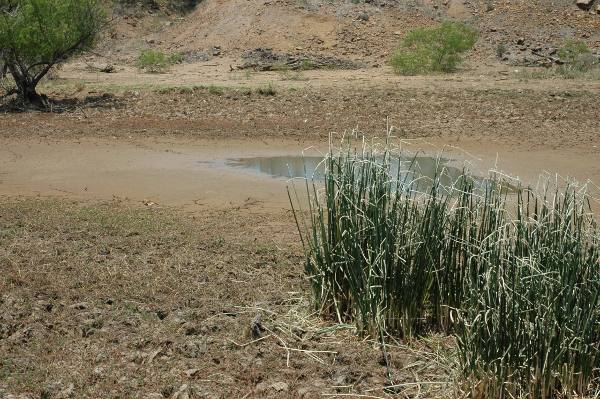
Make way for El Niño, forecast calls for fall and winter rains
Today’s drought and tomorrow’s floods.A few forecasters are predicting an end to a two year drought in the U.S. and the return of normal rains later this year.Already seeing some impact of an El Niño event in northern Colorado.

It may sound too good to be true, but a few forecasters are predicting an end to a two year drought in the U.S. and the return of normal rains later this year, a development that would cause many farmers in the Southwest to dance in their fields.
While significant climate conditions are not expected to affect U.S. agriculture this growing season, the National Oceanic and Atmospheric Administration’s Dr. Klaus Wolter in Colorado says Texas may benefit the most from the reformation of El Niño by as early as late August or in September this year.
Wolter is a leading climatologist at NOAA’s Earth Systems Research Laboratory at the University of Colorado in Boulder. He is the author of the Multivariate ENSO Index (MEI), a research tool he developed to analyze the six main observed climate variables over the tropical Pacific.
“We are already seeing some impact of an El Niño event in northern Colorado where rain has started falling again. But some ENSO (El Niño Southern Oscillation) events have greater impact than others. Since the late 90s, Texas has been the only place in the U.S. that received significant impact from El Niño events,” Dr. Wolter told Southwest Farm Press.
Fueled by meteorological conditions in the Equatorial Pacific region, El Niño is influenced by Pacific Decadal Oscillation (PDO), a variation in non-equatorial sea surface temperatures. It is likened to a northern latitude version of ENSO, but on a much longer time scale. There is a fairly strong correlation between North American weather and climate and the PDO.
“Some El Niño events are milder than others in North America,” Wolter explained. “In the late 90s one such milder event had very little effect on the U.S. West Coast for example, but Texas still benefited from a wetter season.”
His long range prediction calls for greater rainfall in Texas and the potential for greater snowfall in the lower Rocky Mountains of New Mexico and Colorado. The U.S. Midwest may also benefit from increased rain patterns, but to a lesser degree.
El Niño across the Southwest and Midwest
“We are too late into the year for New Mexico agriculture to see any significant benefits from a developing El Niño. Most of the rain in New Mexico comes in the form of monsoonal showers in the summer months. Even in Texas, it is late in the year to see great benefit, but additional rains in fall and winter would bring relief for the 2013 growing season,” he predicts.
Wolter says while not everyone agrees with his assessment and time frame for arrival of El Niño conditions in North America, he says NOAA’s Climate Prediction Centerindicates better chances for precipitation in the near future. He says precipitation prediction maps are indicating dry conditions in the Corn Belt into the early planting season next year, but more normal rain fall during the growing season of 2013.
“Rains in Colorado and across parts of South America are indicative of a returning El Niño. It now becomes a question of when and to what extreme the effects of the event will be in North America,” he added.
Wolter bases his prediction on his analysis of six weather and atmospheric pressure numbers that come from the Equatorial Waters of the Pacific Ocean. The six numbers include sea-level air pressure, components of the surface winds, sea surface temperatures, surface air temperatures and cloudiness.
“La Niña is clearly over, after going through a second-winter stage similar to 2008-09, and consistent with expectations formulated in late 2010, namely that big La Niña events have a strong tendency to re-emerge after taking time off during northern hemispheric summer,” Wolter concludes in his latest MEI report.
“As stated five months ago, the distinct possibility that we could see a switch to El Niño during the next few months appears to have come true. While all multi-year La Niña events of the last 13 years have shown a tendency to weaken or even disappear during this time of year—as in 2000, 2001, 2008, 2009, and 2011—2012 has now joined 2009 as the second case to have a clear-cut switch to El Niño by the northern summer season.
Wolter says no weather or climate prediction can be 100 percent accurate, but he indicates close analysis of available data indicates an El Niño event is currently in its infant stage of development, and that is good news for agricultural producers—at least in Texas.
About the Author(s)
You May Also Like



